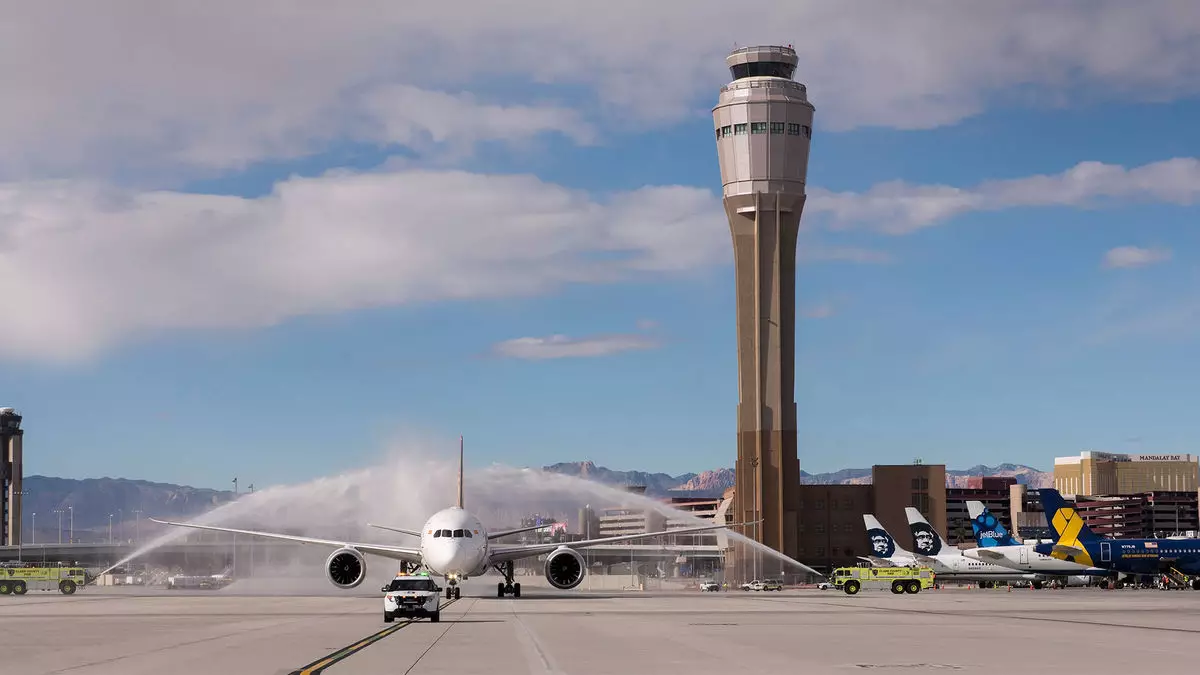In a bid to elevate the travel experience in southern Nevada, the Clark County Commission has outlined ambitious plans for the modernization and expansion of Harry Reid Airport, which is currently facing significant capacity challenges. As travel continued to rebound in 2023, with passenger counts soaring to 57.6 million—a 9.4% increase from the previous year—airport officials recognized the urgent need to upgrade facilities. The proposed enhancements, which include an additional 26 gates to Terminal 1, aim to alleviate congestion and improve operational efficiency at a facility that has become increasingly outmoded.
According to Bryant Holt, the managing director of planning for the Clark County Department of Aviation, the existing infrastructure of Terminal 1 is failing to meet contemporary aviation demands. The terminal can no longer adequately serve the volume of travelers passing through its doors, primarily due to its outdated design and architecture. The introduction of 46,000 square feet of new space is crucial for creating larger holding areas with modern amenities and smoother passenger flow. Such developments not only address current traffic but also prepare the airport for anticipated future growth, ensuring that it remains a key transportation hub in the region.
The proposed modifications are designed to enhance the overall passenger experience significantly. Modern hold rooms with high ceilings and state-of-the-art technology for wayfinding will provide travelers with a seamless journey through the airport. Importantly, there is also an emphasis on practicality. The new layout will facilitate easier access to multiple concourses, reducing the confusion that can arise from the existing configurations. Upgrading passenger circulation pathways and strategically placing express elevators from ticketing areas to security checkpoints will contribute to an efficient flow of foot traffic throughout the terminal.
In addition to the enhancements in passenger experience, plans include the construction of two multimodal centers that will facilitate better access to rideshare services, public transportation, rental cars, and parking for staff. This comprehensive approach not only addresses current inefficiencies but also plans for the future by integrating various transport methods in a way that is cohesive and convenient for all users. The objective is to optimize transportation access while minimizing disruptions to airport operations—an increasingly significant challenge in a bustling urban environment.
One of the key priorities in the revision of the airport’s layout is the management of traffic flow. Presently, the existing design creates bottlenecks, particularly during peak hours. The proposed terminal-to-terminal flyover roadway would segregate airport traffic from commuter traffic, mitigating potential disruptions caused by accidents on surrounding thoroughfares. As Holt articulated, the improved roadway configuration, along with the renovation of the Reid Airport Connector tunnel, is intended to serve as a hallmark of modern engineering falling in line with Las Vegas’s forward-thinking image.
While the presentation made to the commission did not provide concrete cost estimates for these ambitious improvements, funding is expected to rely on bonds supported by landing fees, concessions, parking, and other revenue streams generated at the airport. As Commissioner Jim Gibson noted, investing in the upgrade of existing infrastructure is crucial, even as discussions about a new supplemental airport—set to open in 2037—continue. The enhancements to Reid Airport will pave the way to accommodate future air travel demands while also maintaining its status as the region’s flagship airport.
The push for modernization at Harry Reid Airport aligns with a broader understanding of the aviation sector’s needs. Following the Federal Aviation Administration’s (FAA) feasibility study calling for a new airport, ongoing cooperation among various governmental bodies has been established to protect airspace and land usage. While this new facility aims to alleviate congestion issues, the continued focus on Harry Reid Airport signifies that immediate actions are imperative. Plans are well underway, and as commissioners drive discussions, the airport is poised to undergo transformative enhancements that would solidify its role in southern Nevada’s dynamic travel network.
As stakeholders gather in December to further discuss these plans, the commitment to upgrading Harry Reid Airport illustrates an ongoing dedication to improving not just the airport infrastructure but also enhancing the overall travel experience for millions of passengers who pass through each year.


Leave a Reply